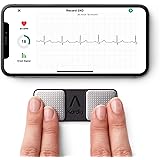9 Peculiar Signs Of Bile Deficiency
Most of us don’t give a second thought about our bile. It’s just there, just doing what it does. But did you know this liquid, produced by the liver and gallbladder, plays an incredibly important role in our digestive systems?
Specifically, when we eat fat, bile gets released into the gut to help break this down so our bodies can absorb it. Bile also acts like a cleanup crew, whisking away toxins from our systems before they can do any damage.
Unfortunately, many people experience low levels of bile production – also known as bile deficiency without even realizing it. This can increase the risk of developing gallstones along with a whole host of other issues.
In this article, I want to shed some light on the top 10 signs of bile deficiency.
Contents
What is Bile
Bile is a yellowish-green liquid digestive fluid secreted by the liver and stored in the gallbladder. It is mainly composed of an element called “Bile salts” which is made from cholesterol.
This is a key component in our bodies for breaking down and absorbing fats in the small intestine.
When you consume food, especially those containing fats, the gallbladder releases bile into the small intestine, where it emulsifies the fat molecules. When this happens, the fats (now broken down into smaller fragments) can easily be digested and absorbed by enzymes.
Bile is also crucial for helping to eliminate waste products and toxins from our bodies. So the liver needs to keep manufacturing it to keep us healthy. An average amount of bile for the liver to produce is about 800-1000ml daily – anything less and the following bile insufficiency symptoms below will start emerging
Heartburn
Did you know our bile can actually play a role in whether heartburn starts creeping up or not? That’s because one job of those bile salts is to keep things balanced.
Normally, once chyme (aka partially digested food) exits the stomach, the high pH levels of bile salts help neutralize some of that acid so it doesn’t go on a burnin’ rampage.
But when bile salt production gets low, the acidified chyme doesn’t get properly buffered before entering the small intestine. Without that alkaline assistance, acid reflux has more chance to occur.
So in a roundabout way, a bile insufficiency could indirectly cause those fiery burps and chest pain we know as heartburn. This is just another reason it’s so important to support healthy bile flow.
Bones And Joint Ache
Vitamin D is vital for maintaining strong, healthy bones. Our bodies need adequate levels to absorb calcium from food and properly lay down this mineral into our skeletons.
But when bile production is running low, it means fat-soluble vitamins like vitamin D may not be extracted from food properly during digestion. As time goes on, this can contribute to a lack of circulating vitamin D levels.
And we all know what happens then – lack of vitamin D impairs calcium absorption and utilization in bones. The bones and joints don’t get the minerals they need, which can translate to aches, pains, or increased risk of fractures.
Frequent Constipation
Bile plays an important part in keeping things moving smoothly down below. In fact, constipation is often one of the first signs something might be awry with bile production.
When we digest fatty foods, bile gets released from the gallbladder to help break down those fats. But bile also has the job of lubricating the inside of the colon to help things pass through easily.
Without enough bile flowing freely, stool doesn’t get sufficiently greased for a smooth exit. Over time, this lack of slippery assistance in the bowel can absolutely lead to constipation becoming frequent or recurrent.
Gallstones
Sometimes when bile gets too thick, hard little stones can form in the gallbladder. This is called gallstones. It happens if the liver or gallbladder gets backed up. Gallstones can lead to vomiting or nausea after eating.
It might get so bad that surgery is needed to remove the gallbladder. So keeping bile flowing well helps prevent thick congestion that could cause gallstones down the line.
Bloating and Indigestion
When we eat foods with fat, bile is needed to break the fat down into tiny droplets that can be absorbed. If bile is low, the fat may become small enough. Large fat pieces left in the digestive tract can cause issues like gas, bloating, and indigestion.
This happens because the fat can’t be used properly without enough bile to break it apart well. So when we support bile production, we are actually helping the body deal with fat better and avoid an upset stomach.
Greasy, Pale, or Floating Stools
When bile is low, it can’t break down fat well. Undigested fat in stools makes it look different – maybe greasier, lighter in color, or even floaty.
This happens because the fat isn’t absorbed as it should be. So pale, floaty, or greasy stool can be a sign bile needs more support to help fully digest dietary fats before they exit the body.
Dealing with bile insufficiency symptoms, and increasing bile levels means that fats get used properly instead of just passing through undigested.
Dry Eyes and Skin
Bile helps the body use good fats and vitamins like A and E. If bile is low, these vitamins may not get absorbed properly or at all. Vitamins A and E keep eyes and skin moist.
So without enough bile to absorb them from food, eyes, and skin could feel dry. That’s why supporting bile helps keep vitamins in check so eyes and skin feel their best always.
Pot-Shaped Belly (Fatty Liver Disease)
You know how some people get that rounded, pot-bellied? Well, it can sometimes be a sign that the liver’s not doing so well. A fatty liver doesn’t just make your gut poke out – it can also mess with bile flow.
Too much sugar, vegetable oils, or alcohol over time are common causes of extra liver fat. But boosting bile production may potentially help turn things around. As the liver de-fats with lifestyle changes, bile starts moving better again too.
With the liver health improving, that stubborn pot belly could fade out. So if you struggle with a large midsection, check in on your bile and liver health, improving both might benefit your waistline and overall wellness.
Skin Rash
Ever notice an itchy, red rash on your chest, back, or stomach that just won’t go away? It might be linked to some funky stuff going on with your bile. When your body doesn’t make enough bile, toxins can end up leaking into your skin that should be flushed out.
This often causes an irritating rash in those upper areas. This is your skin’s way of telling you that your bile isn’t doing its job of removing waste properly.
Getting bile flowing better could help clear up that annoying itch and get your skin feeling fresh again by preventing a buildup of junk it doesn’t want.
Causes of Bile Deficiency
Now that we’ve explored bile and its deficiency symptoms, let’s understand the reasons behind bile deficiency:
- Not Enough Fat: Eating a very low-fat diet can cause bile to thicken up and form cholesterol stones over time.
- Dehydration: Bile is mostly water, so drinking too much booze or not taking in enough H2O could slow bile flow down.
- Liver Issues: Liver inflammation or fatty liver disease might make it tougher for bile to be produced and released properly.
- Gallbladder Gone: Without your gallbladder doing its thing, bile output could use a backup plan like supplements.
- Choline Drain: Missing out on choline-rich foods like egg yolks could contribute to bile issues down the line.
- Gut Flora Fault: Antibiotics or an unhealthy diet may reduce the good bacteria needed to recycle bile efficiently
How to Increase Bile Production
If you suspect a bile deficiency, there are some methods worth trying to boost bile production.
- Enzyme helper: Try a digestive enzyme supplement with ox bile or purified bile salts after eating.
- Ginger power: Incorporate the bile-flowing benefits of fresh ginger and raw lemon juice into recipes.
- Quality fats: Go for high-fat, high-quality sources like grass-fed meat, pasture-raised eggs, and cheese.
- Bitter veggies: Liver-loving choices include brussels sprouts, broccoli, kale, artichokes, turmeric and milk thistle.
- Hydrate: Drink at least 1 liter of mineral-rich water daily, ideally from volcanic sources.
- Gut flora friends: Eat fermented probiotic foods like sauerkraut, kefir, kimchi and pickles to promote good bacteria.
